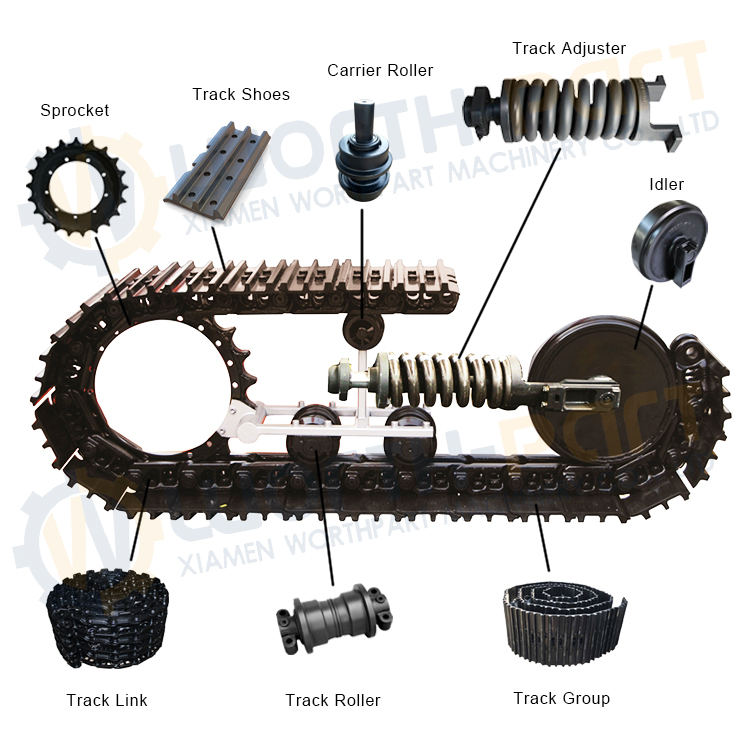Front Air Shocks For Pickup Trucks: The Ultimate Guide to Enhanced Performance and Comfort pickup.truckstrend.com
Pickup trucks are the workhorses of the automotive world, relied upon for everything from daily commutes and family errands to heavy hauling, towing, and adventurous off-road excursions. While modern pickups offer impressive capabilities, their suspension systems often represent a compromise between unladen ride comfort and loaded performance. This is where front air shocks come into play, offering a revolutionary solution to elevate your truck’s versatility, ride quality, and overall capability. Far more than just a replacement part, front air shocks introduce a dynamic, adjustable element to your truck’s front suspension, transforming its handling characteristics and ensuring it’s always ready for the task at hand.
What Are Front Air Shocks?
Front Air Shocks For Pickup Trucks: The Ultimate Guide to Enhanced Performance and Comfort
At its core, a front air shock is a type of hydraulic or pneumatic damper that uses compressed air, rather than just oil and gas, to support and control the vehicle’s suspension. Unlike traditional coil springs or leaf springs that provide a fixed rate of support, air shocks feature an inflatable air bladder or piston system. This air bladder can be inflated or deflated to adjust the shock’s stiffness and, crucially for pickup trucks, the vehicle’s ride height. This adjustability is the key to their immense value, allowing drivers to fine-tune their truck’s suspension for optimal performance, whether it’s empty, heavily loaded, or traversing challenging terrain.
How Front Air Shocks Work
Understanding the mechanism behind front air shocks helps appreciate their benefits. Inside a typical air shock, there’s a chamber filled with compressed air, sealed by a flexible diaphragm or bladder. When air is added to this chamber, it increases the pressure, causing the shock to extend and become stiffer. Conversely, releasing air reduces pressure, allowing the shock to compress and soften.
This air adjustment can be done in a few ways:
- Manual Fill Systems: These are simpler and often involve an external air compressor (like one used for tires) connected to a Schrader valve on the shock. The user manually adds or releases air to achieve the desired ride height and stiffness.
- Onboard Compressor Systems: More sophisticated setups include a dedicated air compressor mounted on the vehicle, controlled by switches or even remote controls inside the cabin. Some advanced systems feature sensors that automatically detect load changes and adjust air pressure to maintain a level ride.

Beyond the air component, air shocks still function as traditional dampers, using hydraulic fluid to absorb bumps and control suspension rebound, preventing excessive bouncing. The combination of air adjustability and hydraulic damping provides a superior, customizable ride.
Key Benefits of Front Air Shocks for Pickups
Installing front air shocks can dramatically improve your pickup truck experience. Here’s why:
- Adjustable Ride Height & Load Leveling: This is perhaps the most significant advantage for pickup owners. When you load the truck bed or hitch up a heavy trailer, the rear typically sags, lifting the front and negatively affecting steering, braking, and headlight aim. Front air shocks allow you to raise the front end to level the truck, restoring proper geometry and improving safety.
- Enhanced Ride Comfort: Air shocks can be softer when unladen, providing a smoother, more compliant ride for daily driving. When loaded, they can be firmed up to prevent bottoming out and reduce body roll, offering a more comfortable experience than traditional springs that become harsh under heavy loads.
- Improved Towing and Hauling Stability: By maintaining a level stance, front air shocks improve weight distribution, leading to better steering response, reduced sway, and enhanced braking performance when towing or hauling heavy loads. This translates to a safer and more confident driving experience.
- Better Off-Road Performance: For off-road enthusiasts, adjustable ride height means increased ground clearance to navigate obstacles. The ability to fine-tune stiffness can also improve articulation and control over uneven terrain, preventing harsh impacts.
- Protection for Vehicle Components: By preventing suspension bottoming out and maintaining proper ride height, air shocks reduce stress on other suspension components, tires, and even the chassis, potentially extending their lifespan.
- Customizable Aesthetics: For some, the ability to raise or lower the front end for a specific look or to clear larger tires is an added aesthetic benefit.


Types of Front Air Shock Systems
While the core concept is similar, different configurations cater to various needs and budgets:
- Helper Air Shocks: These are often designed to work in conjunction with existing coil springs, primarily providing load assistance and height adjustment. They are a common choice for those seeking an economical upgrade for occasional heavy loads.
- Air-Over-Strut Systems: For trucks with front strut suspensions, these systems integrate the air bladder directly into the strut assembly, replacing the factory unit. They offer comprehensive adjustability.
- Coil-Over Air Shocks: These are high-performance units where the air spring replaces the coil spring around the shock body. Often found in advanced lift kits or performance applications, they offer superior control and adjustability.
- Full Air Suspension Kits: While more common for the rear, some comprehensive systems replace all four corners with air springs and shocks, controlled by an integrated compressor, air tank, and sophisticated electronic management system for ultimate ride control and customization.
Choosing the Right Front Air Shocks for Your Pickup
Selecting the ideal front air shocks requires careful consideration:
- Vehicle Compatibility: This is paramount. Ensure the shocks are specifically designed for your truck’s make, model, year, and trim level (e.g., 2WD vs. 4WD, heavy-duty vs. light-duty).
- Intended Use:
- Daily Driver/Occasional Hauler: Helper air shocks or basic air-over-strut systems might suffice.
- Frequent Towing/Heavy Hauling: Look for systems with higher load capacities and robust construction, possibly with an onboard compressor for convenience.
- Off-Road Enthusiast: Consider coil-over air shocks or full air suspension for maximum articulation, adjustability, and durability.
- Load Capacity Requirements: Check the shock’s maximum weight rating. This should align with or exceed the heaviest loads you anticipate carrying or towing.
- Budget: Prices vary widely based on system complexity and brand. Manual fill systems are the most affordable, while advanced electronic systems are the most expensive.
- Installation Complexity: Are you comfortable with a DIY installation, or will you need professional help? Manual systems are simpler, while integrated compressor systems require more wiring and plumbing.
- Brand Reputation and Warranty: Stick with reputable brands known for quality and customer support. Check warranty information for peace of mind.
Installation Guide (Simplified Overview)
While specifics vary by truck and system, here’s a general outline of front air shock installation:
- Safety First: Park on a level surface, engage the parking brake, and block the rear wheels. Use jack stands to safely support the front of the truck after lifting it. Disconnect the negative battery terminal.
- Prepare the Work Area: Gather all necessary tools (wrenches, sockets, torque wrench, jack, jack stands, air tools if available).
- Remove Old Shocks/Struts: This often involves unbolting the lower and upper mounts. For struts, a spring compressor may be required to safely disassemble the old unit if only the shock cartridge is being replaced.
- Install New Air Shocks: Carefully position the new air shocks/struts, ensuring proper alignment with mounting points. Secure all bolts to the manufacturer’s specified torque settings.
- Route Air Lines: Connect the air lines to the shocks. Route them carefully, away from hot exhaust components, sharp edges, and moving parts. Use zip ties or clips to secure them.
- Install Air Compressor (If Applicable): Mount the compressor in a safe, dry location (e.g., under the bed, in the engine bay, or behind a fender liner). Connect power and ground, and run the main air line to a manifold or directly to the shock lines.
- Test and Adjust: Once installed, lower the truck. Inflate the air shocks to the recommended pressure. Check for leaks using a soapy water solution. Drive the truck slowly, checking for proper operation and making fine adjustments to air pressure for desired ride height and comfort.
- Final Checks: Re-torque all fasteners after a short drive to ensure everything is secure. Reconnect the battery.
Disclaimer: This is a simplified overview. Consult your specific product’s installation manual and, if unsure, seek professional installation. Suspension work can be dangerous if not performed correctly.
Maintenance Tips for Longevity
To ensure your front air shocks perform optimally and last for years:
- Regular Inspection: Periodically check the air lines, fittings, and air bladders for any signs of leaks, cracks, or damage. Listen for hissing sounds.
- Keep Them Clean: Dirt and debris can abrade the air bladders or seals. Clean the shocks regularly, especially after off-roading.
- Check Air Pressure: If you have a manual fill system, periodically check and adjust the air pressure to maintain the desired ride height and performance.
- Inspect Compressor (if applicable): Check the air filter on the compressor and ensure all electrical connections are secure.
- Avoid Overloading: While air shocks help with heavy loads, do not exceed your truck’s Gross Vehicle Weight Rating (GVWR) or Gross Axle Weight Rating (GAWR).
- Address Leaks Promptly: Even small air leaks can lead to compressor overuse and eventual failure. Fix them immediately.
Potential Challenges and Solutions
- Air Leaks: The most common issue. Often caused by loose fittings, damaged air lines, or punctures in the bladder. Solution: Use soapy water to find the leak, then tighten fittings, replace lines, or replace the shock if the bladder is compromised.
- Compressor Issues: If the onboard compressor stops working, check the fuse, relay, wiring, and then the compressor motor itself. Solution: Electrical troubleshooting, fuse replacement, or compressor replacement.
- Ride Quality Complaints: Too stiff or too soft. Solution: Adjust air pressure. Remember that optimal pressure varies with load.
- Cost: Quality air shock systems can be a significant investment. Solution: Weigh the long-term benefits against the initial cost. Consider starting with a simpler helper system if budget is a major concern.
Front Air Shocks For Pickup Trucks: Price Table (Estimated)
Please note: Prices are highly variable and depend on the specific truck model, brand, features, and installation complexity. This table provides general estimated ranges for common types of front air shock systems.
| System Type | Key Features | Estimated Price Range (USD) | Ideal Use Case | Notes



